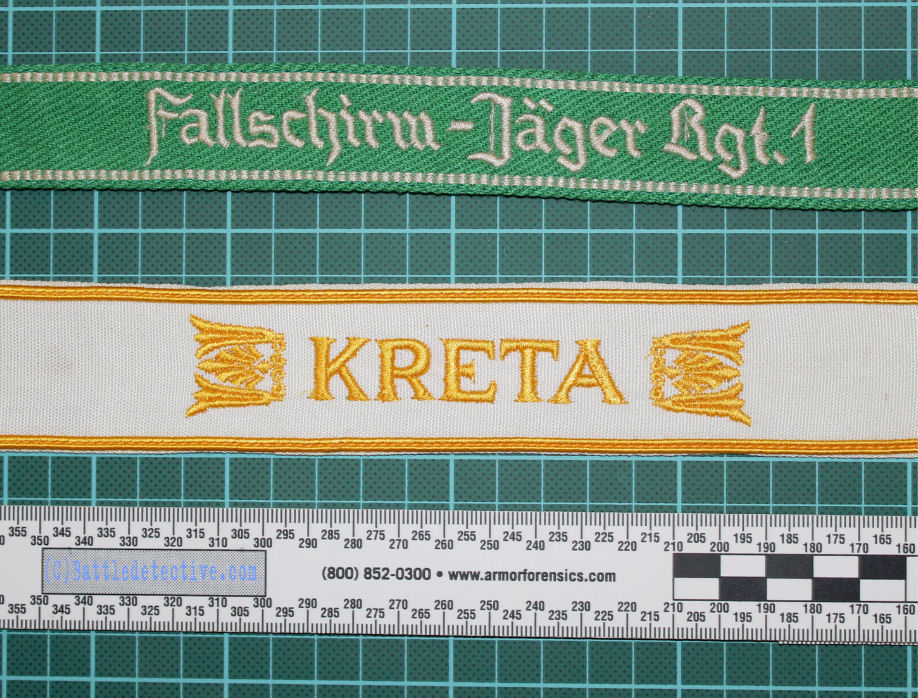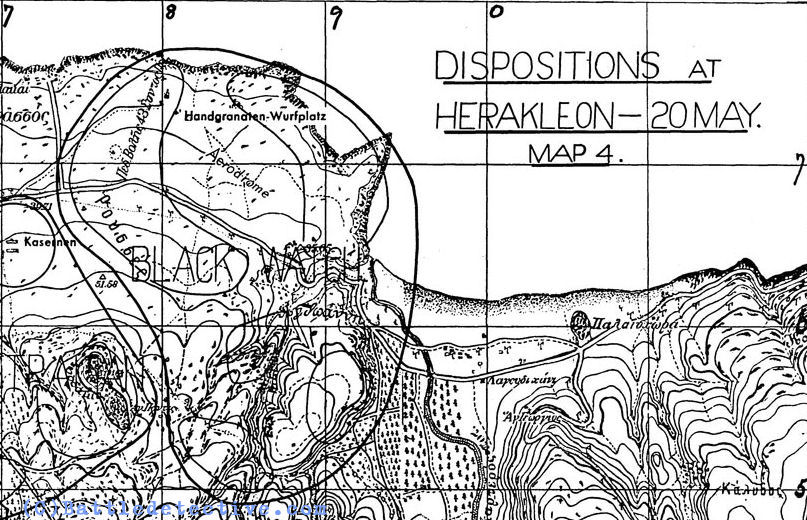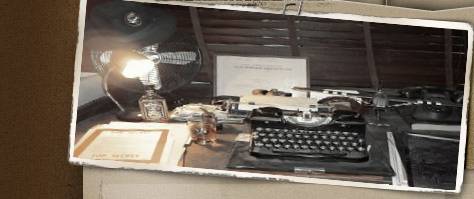|

File No.:
Case File # 18
Title: "Saving Von
Blücher"
Subject:
WW2 Greek Battlefield Legend
Investigation made at:
Heraklion & Maleme, Crete,
Greece
GPS Location: 35°
19' 42.14" N 25°
10'
52.31" E
Period Covered: 21 MAY
1941
Date: 04 SEP 2013
Case Classification:
Possible battlefield myth;
description of the dramatic
death of three German brothers
on the same day on Greek
battlefield of World War Two
Status of Case: Case
Closed
Introduction: The
Von Blücher brothers were three
German brothers, who served as
paratroopers (Fallschirmjäger)
in the Nazi Luftwaffe and were killed
in action within hours of the
same day on 21MAY1941 during the
Nazi invasion of Crete.
|
 |
REASON FOR INVESTIGATION:
The dreadful account of three
brothers, fighting on the same
battlefield and all three killed
in action on the same day, came
to the attention of this agency.
Apparently the German
counterpart of the much wider
known tragic death of three
brothers in the American Nyland
family during the same war, we
conducted a modest investigation
into the subject. |
|
SYNOPSIS |
The tragic death of the three Von
Blücher brothers on the same day
reads like the German version of the
American Nyland brothers,
paratroopers as well, whose story
formed the base for the blockbuster
Hollywood production "Saving
Private Ryan".
These three German brothers were: |
|

Wolfgang Henner
Peter Lebrecht
Graf von Blücher
DOB 31JAN1917 in Altengottern,
Mühlhausen
KIA 21MAY1941 near Heraklion |
|

Leberecht Wilhelm
Konstantin Wolf Axel
Graf von Blücher
DOB 13APR1922 in Fincken
KIA 21MAY1941 near Heraklion |
|

Hans-Joachim
Gebhard Leberecht
Graf von Blücher
DOB 23OCT1923 in Fincken
KIA 21MAY1941 near Heraklion |
The Brothers von Blücher were
noblemen, all bearing the title of
“Graf”; count.
Their ancestor was the famous
German-Prussian Generalfeldmarschall
Gebhard Leberecht von Blücher, the
hero of the battle of Waterloo on
18JUN1815.
The first be killed in action on
this warm 21st day of May 1941 was
youngster Hans-Joachim Graf von
Blücher, during his attempt to
resupply his brother, Oberleutnant
Wolfgang Graf von Blücher, with
ammunition.
Wolfgang had earned the Knight’s
Cross of the Iron Cross for bravery
during the German airborne assault
on the Belgian fortress at
Eben-Emaël in May a year earlier
(see also our
Case File 14).
Oberleutnant Wolfgang von Blücher’s
platoon was surrounded by members of
the British Black Watch. The
17-year-old Hans-Joachim, who had
arrived early morning with the
second assault wave of paratroopers
on Crete during his first active
deployment, had commandeered a
horse, which he attempted to ride
through British lines. The talented
equestrian almost reached his
brother's position, and in fact was
shot before his brother's very eyes.
|
|
Account of the action which
killed the Von Blücher brothers
" The platoon of Lieutenant Count
Wolfgang von Blücher began its final
stand on May 21, a drama which
became a rich source of myth. For
the rest of Walther’s battalion,
relieving their comrades in the
midst of the Black Watch was more
than just a point of honour. But the
Scottish infantry was well dug in
with unrestricted fields of fire.
In their small bowl in this rocky
landscape south of the airfield,
Blücher’s platoon had tried to
scrape trenches with helmets and
fingers to escape the fire of
Vickers machine guns, the odd mortar
bomb and even a few shells from a
Bofors firing from its sand-bagged
position beside the end of the
runway. Blücher and many of his men
were wounded. The platoon, soon down
to less than half its effective
strength, ran out of field dressings
and became very short of ammunition.
At that point, according to the
story, a horseman was seen galloping
towards them with ammunition boxes
tied to his saddle. This spectacle
caused amazement at first in
Scottish ranks, then attracted their
fire. But the rider and the horse
were hit only as they reached the
besieged platoon.
As the ammunition was passed rapidly
around, the lieutenant asked how the
ride was. He learned that the
horseman was his 19-year-old
brother, Leberecht, and that he was
dead. Next Morning, Wolfgang, the
eldest of the three brothers, was
killed along with the survivors of
his platoon. The youngest brother,
Hans-Joachim, was also killed, but
his body was never found. *
* The most curious
part of this story is that for many
years poor families who lived in a
shanty-village near the site,
tending a few goats, claimed to have
seen the ghost of a horse and rider,
but they thought the ghost was that
of a British officer. "
Source: “Crete, The Battle and
the Resistance”, Anthony Beevor,
ISBN: 978-0-7195-6831-2. |
The twenty-four year-old platoon
commander Wolfgang and his men of
Fallschirmjägerregiment 1, who had
arrived with the first assault wave
and desperately surrounded, finally
ran out of ammunition. The rest of
the platoon was overrun by British
armored vehicles and killed toward
noon that day.
Wolfgang’s younger brother, the
19-year-old Leberecht Graf von
Blücher, had also arrived with the
second assault wave. He was reported
killed in action on the same day but
his remains were never recovered.
|
|

Obituary for the
Von Blücher brothers serving in the
same
Fallschirmjägerregiment No. 1
and killed in action on the same day
21MAY1941 |
Four weeks later the mother, Gertrud
von Nordheim (widowed Gräfin von
Blücher), who had lost her husband
in 1924, was informed that three of
her four sons were killed on the
same day in the Battle of Crete. Her
fourth son, Adolf Graf von Blücher,
was released from duty and left the
German Kriegsmarine, to take care of
the agricultural firm at home. Adolf
also died in 1944 from a gunshot
wound while hunting deer.
In 1974, Wolfgang and Hans-Joachim
were reunited in a single grave at
the German War Cemetery on Hill 107
behind the airfield at Maleme,
Crete, which was newly inaugurated
on 6OCT1974.
The brother’s sister Gertrud
Freifrau von Ketelhodt and hundreds
of guests from Germany attended.
Because Leberecht’s body was never
retrieved or identified, his name is
on a plaque of honor (in German:
"Ehrentafel") for the unknown fallen
close to the grave of his brothers. |
German Cemetery on Hill 107 near
Maleme, Crete
In September 2013 we have visited
the German cemetery on Hill 107 and
found the dual grave of Wolfgang and
Hans-Joachim von Blücher as well as
Leberecht van Blücher's name on the
wall of the missing.
|
|
(Click on the
thumbnails to enlarge)
_small.jpg) _small.jpg) _small.jpg) _small.jpg) _small.jpg) _small.jpg) |
Battlefield
We also visited the general area
where the Black Watch had been
deployed on 20MAY1941, just south of
the Heraklion airfield. |
 |
|
|
|
We criss-crossed several paved roads
and dirt tracks in the hills but
found no location which fit the
description of a shanty village. We
were therefore not able to further
investigate the ghostly sightings of
a horseman. |
|
(Click to enlarge)
.jpg) .jpg) |
Mystery:
The story of the three German
brothers who died on the same day is
a grim reminder of the senselessness
of wars; no matter on whose side the
brothers fought. We bring the Nyland
brothers in mind again.
The story of dead warriors who keep
haunting the battlefield is not
unique either.
We recently acquired the book "Mysterie
14/18; World War Two Unexplained"
by Dutch author Richard Heijster
(ISBN: 90 209 3801 0) containing
numerous accounts of unexplained
events on former Great War
battlefields.
American historian Mark Bando
described similar post-combat
encounters with deceased
paratroopers in his book "Avenging
Eagles; Forbidden tales of the 101st
Airborne Division in World War 2"
(ISBN: 0-9779117-0-5). Although
these tales may be categorized as
battlefield myths, on this website
we will refrain from investigating
the paranormal aspect of combat. |
EXHIBITS:
We went out of our way on the island
of Crete, documenting
the combat scene of this battlefield
myth.
We also located other sites
and artifacts of the 1941 Nazi
invasion of the peaceful Greek
island of Crete.
|
|
(Click on the
thumbnails to enlarge)

Nazi objective: Maleme airfield
in use by Royal Air Force in 1941.
_small.jpg)
_small.jpg)
_small.jpg)
Outdoor museum near Hill 107:
frame of a Nazi DFS 230 assault
glider and
corrugated steel parts of Nazi Ju 52
troop carrier planes.
_small.jpg)
_small.jpg)
_small.jpg)
Historical museum in Heraklion: Nazi
parachute harness on display
with manufacture date of after the
1941 invasion; and a K98 rifle.

Museum in Askifou with a large
variety
of Nazi and Commonwealth equipment.
Note Fallschirmjäger helmets and
weapon drop container in background.
Posing with curator Andreas
Hatzidakis.
_small.jpg) _small.jpg) _small.jpg) _small.jpg) _small.jpg) _small.jpg)
Now & Then:
Nazi air assault monument, dedicated
in 1941.
Deteriorated and on private property
today.
_small.jpg)
_small.jpg)
_small.jpg)
_small.jpg)
_small.jpg)
_small.jpg)
Nazi objective: Bridge across the
Tavronitis river near Maleme.
Today, this bridge still bears the
scars of battle.
Of course, we processed the damage
in a properly forensic manner. |
|
|
|
 |
|
Back to Case Files
 |













